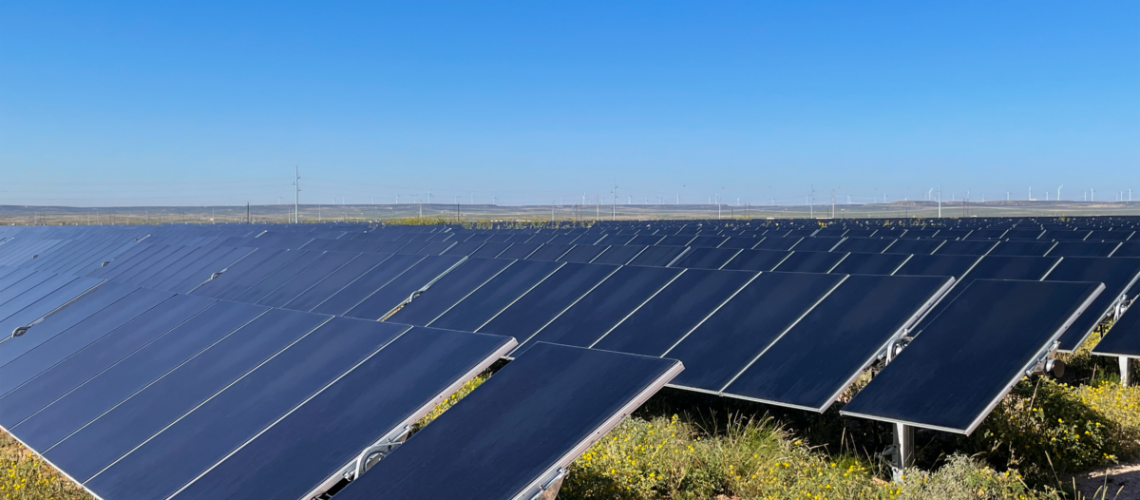We can’t predict disruptions caused by unexpected events like global pandemics. But we need consistent policies to promote domestic manufacturing and ensure that we have the supply we need to deploy the solar we need.
Legislation like the Inflation Reduction Act (IRA) can help. Passed just over a year ago, the law is already fueling a domestic manufacturing boom. Since its passage, the IRA has attracted over $100 billion in private investment, with more than 100 new domestic clean energy manufacturing facilities or expansions announced, representing over 155 GW of solar supply chain capacity additions. Of course, announcements don’t guarantee that factories will be built, and those that are built may take years to come online. The good news is that 70% of the factories recently announced plan to be operational by the end of 2024.
This represents significant progress — and we still need much more. All of the factories and expansions that have been announced thus far would not be enough to supply the expected clean-energy boom.
Given the long lead time to build factories and the complexity of the IRA, it could take some time for the law to ease supply chain issues.
In addition to the standard 30% tax credit for solar projects, the IRA offers a 10% adder for domestic content, intended to stimulate U.S. manufacturing. However, it’s currently very challenging to qualify for this adder.
The Treasury Department recently issued guidance for the Domestic Content Adder. While the guidance clearly defines eligibility and how to qualify, it’s also clear that it will be difficult to meet its requirements under current market conditions.
For a project to qualify for the 10% Domestic Content Adder, the components of the project must be manufactured in the U.S. But it’s not enough for, say, the panels to be manufactured here. The components of the panels, as well as of other components of a project, must also be manufactured domestically.
As the following image shows, solar panels are made with a number of components, including cells. Currently, few if any cells are manufactured in the U.S., which means that no panels are 100% U.S.-made.
Fortunately, the Treasury guidance stipulates that if 40% of the components in a project are manufactured in the U.S., the project will qualify for the Domestic Content Adder (the exception to this is steel or iron, such as that used for solar carport structures, which must be 100% U.S.-made). That percentage will go up in future years, but by then we will presumably have more domestic solar manufacturing.
While a specific component of a project, such as the panels, may not be eligible for the domestic content adder, a combination of components might make the project eligible. The following example shows how this could work — in this hypothetical example, 40% of the components of the products used for the project are made in the U.S.

As is clear from this example, the Treasury guidance for this adder is complex and will make it challenging for projects to qualify today. However, this is just initial guidance; the actual regulations are still forthcoming and expected by the end of the year. It is further expected that the regulations will include additional changes. Hopefully these revisions will give the solar industry more flexibility and time to build up domestic manufacturing. Already, the new guidance has resulted in announcements of solar cell manufacturing, but it will take time for that production to come online.
Local manufacturing
Most of the solar panel factory announcements to date have been for very large factories that tend to be concentrated in a few states, like Georgia, Alabama, and South Carolina. These gigafactories benefit from economies of scale but don’t address issues of equity.
Another model, which is emerging in various locations across the U.S., is to deploy more distributed factories at a smaller scale — with a capacity of 40 to 60 MW rather than 500 MW. Factories like these provide good local jobs and other economic stimulation for communities, as well as easier access to supplies for local solar installers. They can also provide education about clean energy to community members and schools.
One company working at this scale is Crossroads Solar, a solar panel manufacturer in South Bend, Indiana, that employs justice-involved individuals (formerly incarcerated) who are reintegrating into society. Instead of taxpayers paying for people to be incarcerated, Crossroads employees are now contributing members of society who pay taxes and spend the money they earn in their communities. They are also extremely dedicated, engaged employees who give Crossroads Solar a competitive advantage with high productivity, strong commitment, and dedication to the company’s mission.
Now that Crossroads has created a successful micro-factory model for domestic solar manufacturing, the company is interested in replicating their model. This could include expanding beyond employing justice-involved individuals to include neurodiverse talent (such as individuals with autism), communities on Tribal lands, and others with barriers to employment. The Crossroads model provides a blueprint for domestic manufacturing that incorporates worker equity and workforce development opportunities. Replicating this model in communities across the U.S. would promote environmental equity and justice while strengthening local solar supply chains. Another benefit of these factories is that they can be deployed more quickly and cost-effectively than the gigafactories now being announced.
In solar, we often talk about distributed generation: smaller solar installations located in communities, near where people live and work, which provide local environmental and economic benefits. Large, remote power plants, though they also have their place, can’t provide these benefits and require many miles of expensive transmission lines. Distributed solar factories are similar in that they provide communities with benefits that larger, remote factories can’t provide.
Distributed manufacturing can also go a long way toward strengthening solar supply chains. The time is right to expand this successful model across the U.S.

Rosana Francescato is lead Writer and analyst at CollectiveSun, a California company that helps nonprofits and tax-exempt organizations across the U.S. fund solar projects for over a decade. A seasoned communications professional, Rosana has experience at several clean energy companies and nonprofits.



